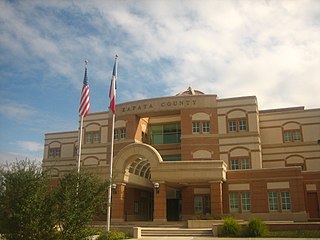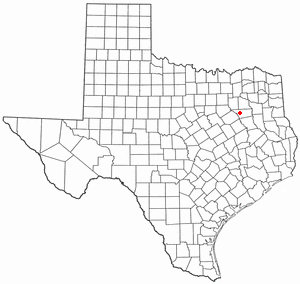The demographics of Russia are the demographic features of the population of the Russian Federation including population growth, population density, ethnic composition, education level, health, economic status and other aspects.

People smuggling, under US law, is "the facilitation, transportation, attempted transportation or illegal entry of a person or persons across an international border, in violation of one or more countries' laws, either clandestinely or through deception, such as the use of fraudulent documents".

Zapata County is a county located in the U.S. state of Texas. As of the 2010 census, its population was 14,018. Its county seat is Zapata. The county is named for Colonel Jose Antonio de Zapata, a rancher in the area who rebelled against Mexico.

Cameron County, officially the County of Cameron, is the southernmost county in the U.S. state of Texas. As of the 2010 census, its population was 406,220. Its county seat is Brownsville.

Nogales is a city in Santa Cruz County, Arizona. The population was 20,837 at the 2010 census and estimated 20,188 in 2018. Nogales forms part of the larger Tucson-Nogales combined statistical area, with a total population of 1,027,683 as of the 2010 Census. The city is the county seat of Santa Cruz County.

Coachella is a city in Riverside County, California; it is the easternmost city in the region known as the Coachella Valley. It is 28 miles (45 km) east of Palm Springs, 80 miles (130 km) east of Riverside, and 130 miles (210 km) east of Los Angeles.

Lafayette is a city in and the parish seat of Lafayette Parish, Louisiana, located along the Vermilion River in the southwestern part of the state. The city of Lafayette is the fourth-largest in the state, with a population of 126,143 according to 2018 U.S. Census estimates. It is the principal city of the Lafayette, Louisiana Metropolitan Statistical Area, with a 2015 estimated population of 490,488. The larger trade area or Combined Statistical Area of Lafayette-Opelousas-Morgan City CSA was 627,146 in 2015. Its nickname is The Hub City.

Buchanan is a village located in the town of Cortlandt in Westchester County, New York. The population was 2,230 as of the 2010 census.

Columbus is a city in Colorado County in southeastern Texas, United States, 74 miles (119 km) west of Houston. The population was 3,655 as of the 2010 census. It is the county seat of Colorado County and is located on the Colorado River. The Colorado County Courthouse is listed on the National Register of Historic Places.

Tornillo is a census-designated place (CDP) and border town in El Paso County, Texas, United States. The population was 1,568 at the 2010 census. It is part of the El Paso Metropolitan Statistical Area. The Tornillo and Guadalupe, Chihuahua, area is connected by the Fabens–Caseta International Bridge.

Caney City is a town in Henderson County, Texas, United States. The population was 217 at the 2010 census.

Mission is a city in Hidalgo County, Texas, United States. The population was 77,058 at the 2010 census and an estimated 84,827 in 2018. Mission is part of the McAllen–Edinburg–Mission and Reynosa–McAllen metropolitan areas.

Zapata is a census-designated place (CDP) in and the county seat of Zapata County, Texas, United States. The population was 5,089 at the 2010 census. As an unincorporated community, Zapata has no municipal government but like all 254 Texas counties has four elected county commissioners chosen by single-member districts and a countywide elected administrative judge.

The Adams–Onís Treaty of 1819, also known as the Transcontinental Treaty, the Florida Purchase Treaty, or the Florida Treaty, was a treaty between the United States and Spain in 1819 that ceded Florida to the U.S. and defined the boundary between the U.S. and New Spain. It settled a standing border dispute between the two countries and was considered a triumph of American diplomacy. It came in the midst of increasing tensions related to Spain's territorial boundaries in North America against the United States and Great Britain in the aftermath of the American Revolution; it also came during the Latin American wars of independence.

Sonoyta, Sonora is a town in the northern Mexican state of Sonora. It stands on the U.S.-Mexico border, facing Lukeville, Arizona, in the United States. It is the municipal seat of the municipality of Plutarco Elías Calles.

A "migrant worker" is a person who either migrates within their home country or outside it to pursue work. Migrant workers usually do not have the intention to stay permanently in the country or region in which they work.

Emigration from Mexico is the movement of people from Mexico to other countries. The top destination by far is the United States, by a factor of over 150 to 1 compared to the second most popular destination, Canada.
The 2010 San Fernando massacre, also known as the first massacre of San Fernando, was the mass murder of 72 undocumented immigrants by Los Zetas drug cartel in the village of El Huizachal in the municipality of San Fernando, Tamaulipas, Mexico. The 72 killed—58 men and 14 women—were mainly from Central and South America, and they were shot in the back of the head and then piled up together. The bodies were found inside a ranch on 24 August 2010 by the Mexican military after they engaged in an armed confrontation with members of a drug cartel. They received information of the place after an Ecuadorian survived a shot to the neck and face, faked his death, and then made his way out of the ranch and up to a military checkout to ask for help. There were only three survivors. Investigators later mentioned that the massacre was a result of the immigrants' refusal to work for Los Zetas, or to provide money for their release.

Miguel Pro Human Rights Center (PRODH), is a Jesuit human rights society based in Mexico, founded in 1988.
The Latin American and Caribbean Feminist Encuentros are a series conferences which began in 1981 to develop transnational networks within the region of Latin America and the Caribbean. The main focus of the conferences was to discuss and evaluate how women's marginalization and oppression could be eliminated given the existing economic and political systems by forming networks and strategies to create alternatives to existing norms. At times contentious, the various conferences explored what feminism meant—whether it was an inclusive movement or limited by social class, racial make-up, or sexuality; whether it was militant or passive; whether it was political, social, or economic; whether it was designed to work within patriarchal systems or needed to create new systems; and even whether accepting funding invalidated being feminist. Numerous initiatives recognizing diverse groups of women, such as Black and indigenous women, lesbian women, and various cultural and economic groups were spawned by the dialogues. The conferences are an ongoing attempt to negotiate strategies in an attempt to change region-wide policy agendas toward women.
















